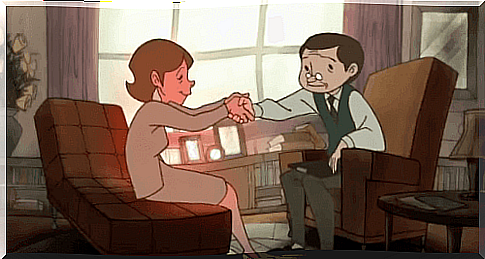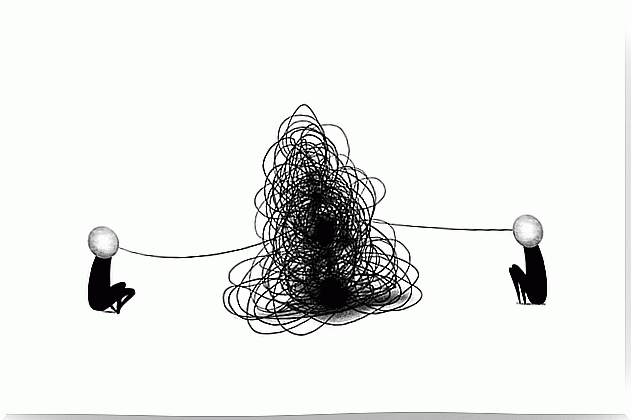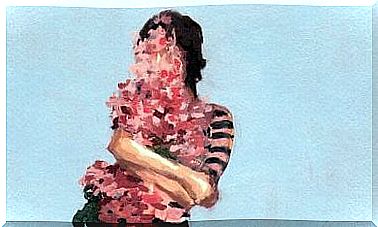Empathy Is The Thread With Which To Weave Therapy

We have often heard of empathy, its importance in social relationships, its powerful effects in communicating with others, the indispensable need to make it part of our life. Nonetheless, we rarely hear about the importance that this plays in psychotherapeutic relationships and how therapies, without it, go adrift.
The therapist’s empathy towards his patients is as necessary as it is fundamental for the proper functioning of the therapy, just like the air we breathe. It is a good that cannot be done without.
In therapy as in life, people feel lost
Even undergoing therapy, the patient often feels lost. He feels his life has lost its rhythm. He does not find a powerful and visible light to guide his steps. His journey begins groping, between the darkness of the path and the small beams of light that appear little by little.

The therapist can do nothing but accompany the patient on that journey. That path that, between circumstances and his will, they have chosen to learn life lessons that will consolidate the patient as a person. Very often we tend to think that the psychologist’s job is to save the patient from the uncertain path in which he finds himself: to give him back the motivation to move away from the moments he has to live in order to favor his own growth.
Life is sometimes uncertain: we have to accept it
Walking through life uncertainly is natural and human. We shouldn’t be afraid of this. Life is like a torrent of water that changes direction, but always goes on. It is as if that current sometimes turns into a trickle of water… while, at times, it becomes a river in flood, recovering the strength of past times.
The course of a river is also uncertain. His impulse and his blind faith in the land he floods are the engine that push him to follow that hesitant destiny, as changeable as our life.

“Living is the rarest thing in the world. Most people exist, that’s all “
Something similar happens in psychotherapy. The patient feels lost on numerous occasions. However, it is very different to feel lost or alone even when accompanied. The patient feels accompanied while the therapist gives him back each of the threads that the latter gives him. Adopting an empathic attitude and respecting the patient’s rhythms is fundamental in this process.
A nice metaphor about empathy
It can be said that the patient or person who brings his pain to the psychologist, gives him threads. Yes, just like the threads of a ball of yarn. He gives them at his own pace. Sometimes it takes a while, other times it throws them all at once.

The therapist collects these threads thrown by the patient but, far from putting them aside, returns each of them to the patient. Gradually the threads intertwine and create a loom. This custom frame will serve as a support in the future when the patient needs it. The frame they both create is the metaphor of the therapeutic relationship.
Therapist and patient are sailing in the same boat
The therapeutic relationship cannot be understood without empathy. Empathy is that support, that wonderful frame on which the therapeutic process advances. Every gesture, every emotion, every thought, every need is listened to and returned in a clearer, sharper and more suitable way to the person in front of us.
The therapist does not sail on a different boat, but on the same boat as his patient. And they sail together. The latter accompanies him in his uncertain and full of life crossing.

If you do not return each of the threads that the patient delivers, you cannot build a relationship of trust and security. There will be a lack of harmony and the patient, far from perceiving his therapist as a close person, will see him as a distant figure in whom he cannot place his trust: moreover, even worse, he will not feel free to be himself.
The therapist must also listen to what the patient does not express in words
To give back, you have to listen. Listen to the patient’s every movement. People communicate in multiple and different languages. We talk to every part of our body, without having to use our mouth. We have to listen to each of these languages.
We must master this wisdom that often neither books nor the university teach us. It is a much more indirect and intuitive language. We must understand that the channel of our life also passes through this language and that we must remain close to our patients. Only in this way will we be able to listen to them and understand them.
Understanding with empathy fundamental to therapy
It is in the empathic understanding that the therapeutic relationship takes shape. As Mariano Yela said in a prologue to the book by Carl Rogers and Marian Kinget:
“ The psychotherapist does not sanction, does not censor, does not judge the patient or act in his place, does not show him the way or bar the way; he lives with him his problems and struggles, striving to understand the personal sense they have for himself. The patient does not find anything that distances him from himself or that prompts him to disguise himself ”.

The therapy process, therefore, is unique and personal. There are no standard packages with universal answers or techniques. Each person is unique and you must always adapt to their needs. We must accompany her on the path that her life requires. A path that includes certainties and uncertainties, because, after all …
What else is life otherwise?









